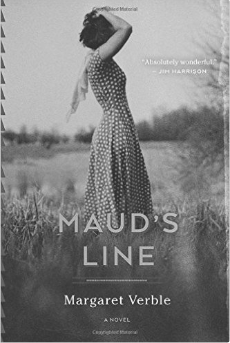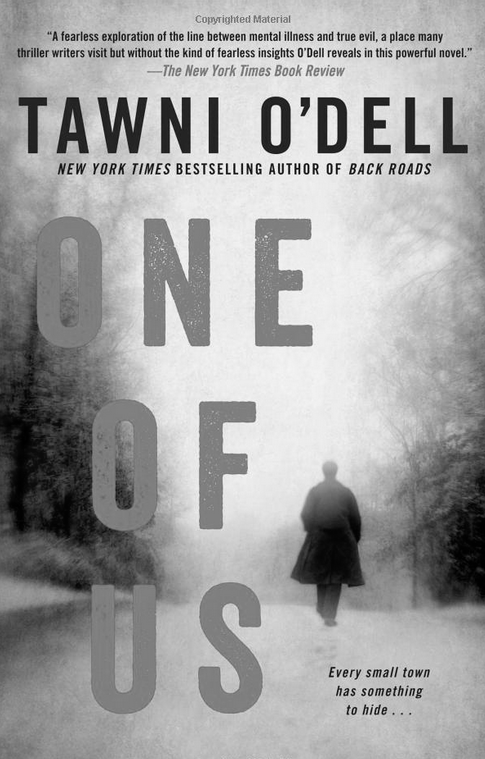Books
Maud’s Line by Margaret Verble
The cover photo for Margaret Verble’s debut novel—a young woman standing alone, running a hand through her tangled hair—perfectly captures the poise of her heroine, Maud. It’s 1928, long after the Trail of Tears forced Maud’s Cherokee ancestors from their ancestral lands in the southeast to the “Indian Territory.” Now it’s the state of Oklahoma, and she lives with her ornery father Mustard and her sensitive brother Lovely, farming a small allotment. Plumbing and electricity have not made it to their river bottom country yet, but there is a well for water, chickens for eggs, a porch to idle on, and Maud’s extended family living at farmsteads nearby. Mostly though, Maud dreams of moving to a town and living the life she’s read about in The Great Gatsby and other novels she borrows from her neighbor, Mr. Singer. In other words, Maud is much like any other country girl in early 20th century America.

She liked books, learning, and clean things. She liked folks being nice to one another. But most of all, she wanted to live in a place where people died of natural causes when they were old and were dressed up in suits and laid down in wooden boxes.
There’s a lot to hold Maud back, though—including a feud her father has with their nasty neighbors, the Mount brothers, and the habit her menfolk have of wandering off and disappearing for days. Booker, a white itinerant peddler, offers her the possibility of escape, bright as the blue tarp he uses to cover his wagon; Billy Walkingstick, an Indian boy her age, is another suitor. And oil booms and the Roaring Twenties promise a different life. But walking her section line alone, carrying a stick to ward off the Cottonmouths, the sheer emptiness of the countryside seems to overwhelm Maud.
Maud’s Line is not a tightly constructed novel—its pacing is natural and unlabored. Maud gets up, feeds the chickens, gets water from the well, makes biscuits, checks to see if Lovely is in the field and if her father has returned from his latest drinking bout or tramp around the country. She lays down on her bed and looks at a crack in the ceiling and waits. Maud waits a lot... Which is not to say Verble’s novel is tedious. Far from it—the slow, atmospheric rhythm of the story, its unexpected entrances and departures, lead the reader into the quieter waters of an earlier time. Unlike most historical fiction, famous events and personages are not paraded before us. This isn’t the story of Thomas Cromwell or the Buffalo Soldiers; beyond books by Fitzgerald and Sinclair Lewis and the speculation that her father may have joined Pretty Boy Floyd, very little of the outside world reaches Maud’s little backwater. Instead Verble tells us the story of ... what exactly? That’s what keeps you guessing. A tale of murder on one page, a turgid romance on another, Maud’s Line detours around all genre formulas—even the well-known trope of the “literary novel.”
Lovely was still on the porch when he said, “We’ve got a problem in the kitchen.”
“What kind?”
“A dead dog.”
“In the kitchen?”
“On the table.”
“That’s just meanness,” Maud said.
And there is more than a little meanness to be found in Maud’s story. Like Wessex in Thomas Hardy’s The Return of the Native, the Oklahoma of Maud’s Line can be quaintly rustic, but the forlornness of the countryside also has darker undertones that surface in its characters. Verble, whose romantic snafu story “Million Miler” appeared in the Spring/Summer 2013 issue of Whistling Shade, is herself a member of the Cherokee Nation, and set this story on her family’s allotment. Her Maud, like Eustacia Vye, is a woman trapped—a flawed character, perhaps, but one of deep feeling.
One of Us by Tawni O'Dell
Master story-teller Tawni O’Dell weaves another tantalizing gem regarding murder, mayhem and depravity with her fifth novel, One of Us. As in her debut novel, Back Roads, and subsequent books, the scene is set in western Pennsylvania, this time, in a small town named Lost Creek where the owners of coal mines have been scarring and raping the landscape for generations. In fact, the coal mines in all of her stories seem as if they are characters themselves.

When no one else wanted them, the wealthy coal barons in places like Lost Creek were hiring unskilled Irish immigrants to work in the mines. O’Dell writes:
They weren’t Irish anymore, but they weren’t American yet. They were neither, and they were both. They were Irishmen living inside an American skin; they were Americans living inside an Irish head.
They were forced to carve out a new identity and a new culture for themselves here in the hills of Pennsylvania. Ireland had no place for them. America didn’t want them. The mines became their country...
We are reminded of Johnny Cash’s warning of laboring in coal mines in the lyrics of the Merle Travis song, "Dark as a Dungeon":
It’s dark as a dungeon and damp as the dew
Danger is doubled and pleasures are few
Where the rain never falls, the sun never shines
It’s dark as a dungeon way down in the mines.
The company owners literally owned the mining towns and their workers. The companies would charge for goods and services far beyond the wages they were paying their employees, so going into debt was a common occurrence. Oftentimes, a son would be forced into becoming a miner to attempt to pay off his father’s debt, sometimes unsuccessfully. Add another generation.
In One of Us, the protagonist is Dr. Sheridan Doyle, a forensic psychologist who was highly motivated to escape working for Walker Dawes’s Lost Creek Coal Company, the workplace of his ancestors. Doyle isn’t without his flaws; he has several mental disorders and phobias brought about by an assaultive father and a mentally ill mother. He has risen above the trauma of his childhood to become wealthy and famous in his chosen career. He is often called upon as an expert witness at murder trials, as his testimonies are highly regarded. Doyle is also the author of several best-sellers and appears regularly on television talk shows.
As he enters the outskirts of his hometown, O’Dell describes it:
After a sharp, deadly bend marked with a cluster of small, plastic crosses and artificial flowers, a collection of houses can be seen at the end of a coiled, shedding, snake of a road. The usual words to describe towns situated at the bottom of valleys—huddled, nestled, snuggled, cradled—don’t seem to apply. This one looks like it’s been spit there.
Sheridan (now called, Danny), whose sole mission of returning to Lost Creek is to check on his ninety-six year-old grandfather, Tommy McNab, finds him in good health following a bout of pneumonia.
Danny, while staying in Lost Creek, goes out jogging and discovers a dead body. He calls the police and two officers show up. They speculate on the possibility that ghosts or zombies of long-dead miners have murdered the victim. Then the town’s only detective, Rafferty Malloy, arrives. Rafe and Danny’s grandfather Tommy were Danny’s protectors, saviors, in his youth. Now, they are reunited and become entangled in a few bizarre turns of event. For instance, there is a sudden rash of unexplained homicides. Among the townsfolk, it’s rumored that the murderers are indeed the ghosts of dead miners.
Dr. Doyle and Detective Malloy team up using science instead of superstition to find the real culprit. As in her previous novels, O’Dell slowly reveals a deep, dark, chilling secret. Deep, dark and chilling as a coal mine itself.
